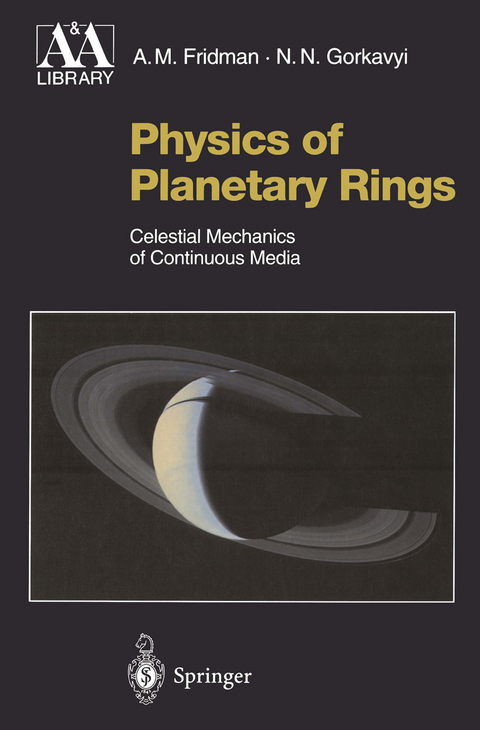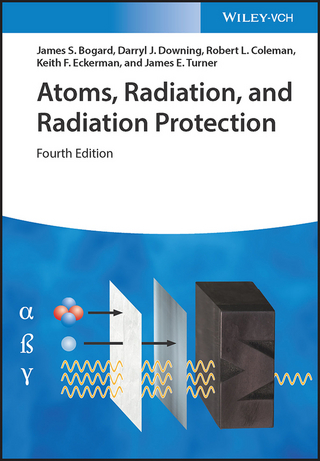
Physics of Planetary Rings
Springer Berlin (Verlag)
978-3-642-08437-9 (ISBN)
1. Introduction.- 2. Observational Data.- 3. Celestial Mechanics Minimum.- 4. Elementary Particle Dynamics. I Rigid Body Collisions.- 5. Elementary Particle Dynamics. II Ring Cosmogony.- 6. Elementary Particle Dynamics. III Wave, Photometric, and Other Effects.- 7. Collective Dynamics of Disc Particles. I Formalism.- 8. Collective Dynamics of Disc Particles. II Stability Analysis.- 9. Resonance Effects in Planetary Rings. I Spiral Waves.- 10. Resonance Effects in Planetary Rings. II Narrow Ringlets and Satellites.- 11. Formation and Stability of the Uranian Rings.- 12. Origin, Dynamics, and Stability of the Neptunian Rings.- 13. Self-organisation of the Solar System.- 14. Space Studies of the Outer Planets.- Conclusion.- Appendices I. The Possibility of Studying the Dynamics of Astrophysical Discs in a Two-Dimensional Approach.- 1. Introduction.- 2. Original Equations for the "Volume" Functions.- 2.1 Initial Dynamic Equations.- 2.2 Equation of State.- 3. Derivation of the Basic Equations for the "Plane" Functions.- 3.1 Order-of-Magnitude Estimates of the Terms in the Initial Equations.- 3.2 The Two Limiting Cases of Astrophysical Discs.- 3.3 Limitations of the Characteristic Times of Processes Studied in the Two-Dimensional Approximation.- 3.4 Closed System of Integro-differential Equations for a Barotropic Disc.- 4. Closed Set of Differential Equations for a Polytropic Disc in an External Gravitational Field.- 4.1 Derivation of the Two-Dimensional Equations.- 5. Closed Set of Differential Equations for a Polytropic Self-gravitating Disc.- 5.1 Derivation of the Two-Dimensional Equations.- 5.2 Why Does the Gradient of the Plane Pressure Not Have the Physical Meaning of a Force?.- 6. Conclusion.- 1. Derivation of a Closed Set of Integro-differential Equations.- 2.Derivation of the Dispersion Equation Describing the Three-Dimensional Perturbations.- 4. Dispersion Relation for Waves in the Plane of the Disc.- 5. The Role of Perturbations Along the Rotation Axis.- 5.1 Condition for Neglecting Mass Transfer Along the Rotation Axis.- 5.1.1 General Case.- 5.1.2 Isothermal Disc.- 6. Conclusion.- III. Derivation of the Linearised Equations for Oscillations of a Viscous Disc.- 1. Derivation of the Linearised Equations for Oscillations of a Viscous Uniformly Rotating Disc.- 2. Derivation of the Linearised Equations for Oscillations of a Viscous Differentially Rotating Disc of Inelastic Particles with Account of External Matter Fluxes.- 3. Derivation of the General Dispersion Equation.- IV. Evaluating the Gravitational Potential Inside and Outside a Triaxial Ellipsoid.- 1. Potential Inside the Ellipsoid.- 2. Potential Outside the Ellipsoid.- V. A Drift Mechanism for the Formation of the Cassini Division.- 1. Introduction.- 2. Statement of the Problem.- 3. Derivation of the Non-linear Momentum Conservation Equations.- 4. Time-Averaged Non-linear Momentum Conservation Equations.- 5. Absence of Averaged Radial Mass Flux in a Dissipationless Disc. Large-Scale Convection.- 6. Radial Mass Transfer in a Viscous Disc.- 7. Evolution of the Surface Density of a Disc.- 8. Conditions for the Formation of Different Types of Resonant Structures: Gaps or Wavetrains?.- 9. Estimate of the Maximum Width of a Gap Produced by a Density Wave.- 10. Some Additional Remarks.- VI. Resonance Structures in Saturn's C Ring.- References.
From the reviews
"The book will become essential reading for all researchers into the diverse ring systems of Jupiter, Saturn, Uranus and Neptune."
Irish Astronomical Journal, 2000
| Erscheint lt. Verlag | 1.12.2010 |
|---|---|
| Reihe/Serie | Astronomy and Astrophysics Library |
| Übersetzer | D. ter Haar |
| Zusatzinfo | XXI, 437 p. |
| Verlagsort | Berlin |
| Sprache | englisch |
| Maße | 155 x 235 mm |
| Gewicht | 687 g |
| Themenwelt | Naturwissenschaften ► Physik / Astronomie ► Angewandte Physik |
| Naturwissenschaften ► Physik / Astronomie ► Astronomie / Astrophysik | |
| Naturwissenschaften ► Physik / Astronomie ► Thermodynamik | |
| Technik ► Luft- / Raumfahrttechnik | |
| Schlagworte | Celestial mechanics • Planet • Solar • Solar System • Vortices |
| ISBN-10 | 3-642-08437-0 / 3642084370 |
| ISBN-13 | 978-3-642-08437-9 / 9783642084379 |
| Zustand | Neuware |
| Informationen gemäß Produktsicherheitsverordnung (GPSR) | |
| Haben Sie eine Frage zum Produkt? |
aus dem Bereich


